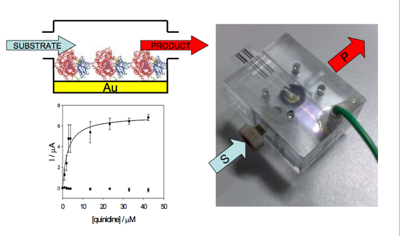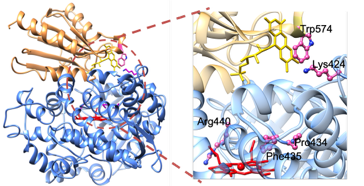





ENGINEERING HUMAN CYTOCHROMES P450 AND FLAVIN MONOOXYGENASES FOR DRUG METABOLISM STUDIES
Prof. Gianfranco Gilardi, Prof. Sheila Sadeghi
Keywords: drug metabolism, cytochromes P450, flavin monooxygenases, bioelectrochemistry, adverse effects,
The project ranges from the study of fundamental electron transfer theory, catalysis, bioelectrochemistry to the creation of a micro-fluidic cell where arrays of different enzymes are immobilised to generate a matrix that mimics, for example, the in vivo situation in the human liver. Here enzymes can be exposed to various substrates or inhibitors in sequence or in parallel, where the effect of a product of one enzymatic reaction can be studied on a second and different enzyme.
The adverse effects of drug-drug or drug-food interactions are costly both in terms of human life and investment leading to withdrawal of drugs from the market.
This project involves the feasibility of using a new electrochemical platform for drug-drug and drug-food interactions of drug metabolising enzymes.
The research if focused on the following enzymes:
- Human cytochromes P450 are the main responsible for drug metabolism in human liver. They carry out different reactions leading to the production of one or more metabolites. Their inhibition by a drug or a food-derived compound is of crucial importantce for possible adverse effects of a drug. These studies are also carried out on engineered chimeric cytochromes P450 where a non-physiological reductase module is introduced to make these enzymes self-sufficient for studies in solution. Moreover, the reductase domain offers an interface module for the immobilization on electrode surfaces.
- Flavin-containing monooxygenases (FMO) constitute the second most important human monooxygenase system after cytochromes P450 and in a similar way, catalyse the oxygenation of a wide variety of drugs and xenobiotics.
The very first observation of direct electrocatalysis of human FMO3 was carried out by our group. The exploitation of hFMO3 using electrochemical techniques is intended for its long-term application in identifying drugs or drug candidates as substrates.
